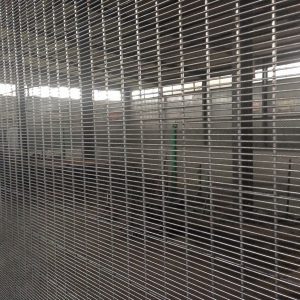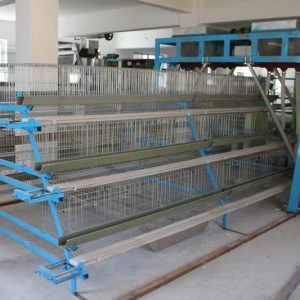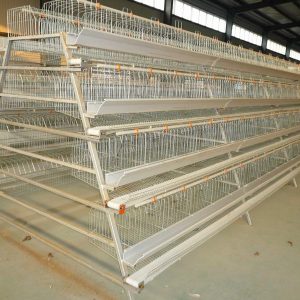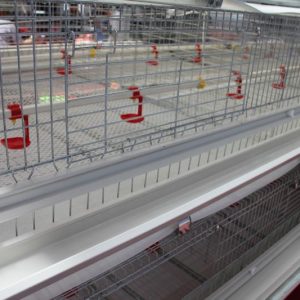
Some experiences in broiler feeding and management
With the improvement of people’s living standards, people’s pursuit of the nutritional value of food is also improving. With regard to chicken consumption, people have begun to shift from quantity to quality. Yellow feather broilers have become the new favorites of the people’s dining table, especially in southern my country. Have a habit of eating yellow feather broilers. Yellow feather broilers are divided into high-quality three-yellow broilers, mixed broilers, and local native chickens. Among them, high-quality three-yellow broilers are raised more frequently, followed by broiler chickens, while local native chickens are currently not raised because of their low fecundity and long feeding period. However, local native chickens are the most recommended chicken breed. . How to raise yellow feather broilers and obtain the best benefits has become the focus of attention. However, yellow feather broilers are not like white feather broilers. After years of breeding and breeding research, there has been a set of breeding standards and nutritional requirements. The breeding and management of broiler chickens, especially broiler chickens and native chickens, does not yet have a complete set of management data. They are managed through exploration and summarized experience. Based on this situation, the breeder may encounter various problems, but after summing up, summarizing There are several aspects, which are also the difficulties in the breeding of yellow feather broilers. Different farmers may have different views. Here we summarize our views based on the customer information collected during the visit and the experience in the service. reference.
一 The problem of chicken disease purification
In the actual service, it is found that yellow feather broilers have more pullulus problems than white feather broilers. It can be seen that the quality of chicks provided by the current yellow feather broilers in China has not reached the high standard requirements. Although there are many broiler production companies, However, there is very little work done to breed breeders and truly cultivate a good breed through formal breeding methods. Everyone is profiting for the blind commodity market to support the operation of enterprises. This is a vicious circle for the country. It can only make chicken breeds continue to degenerate, and eventually a lot of money will be invested in this area. The state stipulates that for the purification of primary breed chicken pullorum and leukemia, the positive rate should be less than 0.2% and 2% when the selected strains are accepted. However, in actual production, many breeder farms cannot meet the purification standards for pullorum and leukemia. One of the reasons is that many positive chickens need to be eliminated during the purification process, which will increase breeding costs. The second reason is that although some farms have done quarantine work, they are reluctant to eliminate the positive chickens after being detected, and they are still kept in the farm, causing horizontal transmission. The third reason is that yellow feather broilers are generally raised in the south. Open chicken houses are used. It is difficult to control mice in chicken farms. The mice carry salmonella, which pollutes the feed and the environment of the chicken house and causes spread. The fourth reason is that when breeders are undergoing artificial insemination, few breeder farms use a vas deferens only once, that is, one vas deferens per chicken. The continuous cross-use of insemination instruments makes it difficult to control the horizontal transmission of pullorum disease. . Therefore, purely considering the purification of chicken disease from a technical point of view, it is bound to get twice the result with half the effort, and the benefits will not be obvious. The purification of chicken disease is actually a comprehensive management problem. It is recommended that relevant departments establish necessary laws and regulations from various aspects such as administration and technology, enforce them, and strengthen inspections. Only hope for the purification of chicken diseases. Otherwise, it is very difficult to achieve the purification target in a short time.
Pullorum during the brooding period is not easy to treat, or it can be said that it cannot be cured, which reduces the production performance and affects the economic benefits of the farm (household). Therefore, when reminding the majority of breeding farms (households) to buy chicken fry from yellow feather broilers, don’t be greedy for cheap, but look at the quality. At the same time, when inspecting the breeder farm, you must choose a more formal breeder farm to introduce chicks to ensure that the chickens can perform Normal production performance achieves ideal production efficiency.
二 The issue of breeding standards
The breeding of yellow feather broilers is basically based on the selection and breeding of excellent local breeds and introduced breeds in my country. Yellow feather broilers show regional differences in body shape, appearance, and growth rate. Therefore, it is necessary to formulate corresponding standards to classify and guide yellow feather broilers; at the same time, develop supporting nutrition standards, nutritional requirements and additive compatibility technologies for different yellow chicken breeds , Provide a basis for the feeding and management of yellow feather broilers.
Because the performance of commercial chickens bred by different chicken breeds is different, and their nutritional needs are also different, it is necessary to formulate corresponding diets according to the nutritional standards of different breeds to adapt to the growth requirements of the chickens, so as to achieve the highest Economic benefits. The feeding amount of yellow feather broilers is increasing year by year, but there are few studies on the nutritional requirements of yellow feather broilers in different regions, different breeds and different seasons. However, there are few researches on the nutritional requirements of yellow feather broilers at present, and there is currently no unified and complete breeding standard for yellow feather broilers in China. In order to avoid wasting feed resources and increasing feeding costs, please do not blindly copy the feeding standards for fast large broilers. High-quality yellow feather broilers have a slower growth rate and a longer feeding cycle than fast large broilers, so the requirements for dietary nutrient content are lower than fast. For large broilers, these standards are higher than the growth needs of high-quality yellow-feather broilers, which will affect feed returns and chicken quality. However, due to the large differences in the growth rate of different high-quality yellow-feather broiler breeds, it is difficult to unify the feeding standards. According to the growth and development of different types of fast, medium-speed and high-quality yellow-feather broilers, the research on the nutrient requirements of yellow-feather broilers must be carried out in stages to formulate realistic feeding standards for yellow-feather broilers.
In actual production, it is recommended that the breeding farm (household) can consult the breeding chicken farm for the breeding standards of the flock. It is best if you have your own manual; if there is no breeding standard, you must also ask about the main nutritional indicators such as the daily The requirements for crude protein, metabolizable energy, calcium, phosphorus, and lysine in the diet, in order to select suitable raw materials to make the diet according to the required indicators; if none of them are as desired, you can refer to the white feather broiler standard and appropriately reduce it on the basis Some nutritional indicators. At the same time, pay attention to carefully observe the growth of the chickens during the breeding process, adjust the relationship between the nutritional needs of the chickens and the standard data requirements at any time, and formulate your own breeding standards. We call them the practice standards. This is the wisest Each batch of chicken flocks will have different adjustments. After a few batches, there will be real standards of practice, which is also called experience. But what needs to be explained is that to do this kind of work, you need a certain amount of nutritional knowledge to be able to do it successfully, and you can’t blindly adjust the indicators to avoid big losses.
Standardization is necessary to organize large-scale production. As the yellow chicken industry, non-standard production is chaotic and blind. I hope that the breeding standards for yellow feather broilers will be introduced as soon as possible.
三 The coloring problem of yellow feather broilers
“Three yellow” chickens have the characteristics of three yellows, namely yellow feathers, yellow beaks, and yellow shins. Some are wrong views of consumers, but they are also goals pursued by people. However, high-quality broiler breeds grow faster and faster. It is a problem that the feed industry needs to face to make the chickens achieve the ideal coloring during the growth period to meet the needs of the market. It makes the breeders have to use their brains to find ways to achieve the desired results. Some farms (households) do whatever they can to pursue. I hope that consumers will also correct their ideas. In terms of food, the yellower the better, the purer the taste. These must be solved fundamentally, and it can be changed by adding certain additives. With the rapid development of today’s technology, all colorants can be made, some are natural, but most are artificially synthesized pigments. Generally speaking, compared with artificially synthesized additives, natural additives have a faster coloring speed in the human body. Hazardous residues and economic input are very different. Formal production plants will definitely use additives in strict accordance with national regulations, but those who make money by unscrupulous means will conduct illegal operations driven by profits. The role of coloring agents has no other nutritional function except coloring. In today’s advocating “green food”, the large amount of artificial synthetic pigments will inevitably make consumers doubtful. Therefore, people should not overemphasize the coloring effect of chicken while properly pursuing meat color.
In order to improve the beauty of the skin and feathers of yellow feather broilers and highlight the “three yellows” characteristics of yellow feather broilers, you can appropriately add Lucangding or Jiali yellow, and make full use of natural feed, such as alfalfa meal, yellow corn, red Chili powder and other raw materials rich in lutein.
There are many factors that affect the skin coloring effect of broiler chickens. Different breeds of broiler chickens have different skin coloring properties, but the yellow substances deposited on the subcutaneous fat of the broiler chickens are all lutein; only lutein and zeaxanthin have the coloring effect, and they usually exist In corn, corn gluten meal, alfalfa, marigold, although corn, corn gluten meal and other feed ingredients are rich in lutein, the content of lutein decreases with the prolonging of the storage time of the raw materials. Feed ingredients corn and gluten meal in summer season They are all aged products, and the shortest storage period is about ten months, and the lutein content loses nearly half; in addition, lutein is finally deposited in the subcutaneous fat of the broiler to appear yellow, so the amount of subcutaneous fat directly affects the coloring effect of the broiler skin ; The high temperature season makes the broiler feed intake significantly decreased, the corresponding lutein intake is insufficient, and the high temperature can easily cause the oxidation of lutein and oil, resulting in the reduction of the available lutein in the feed, and finally the coloring effect of the broiler Getting worse. Therefore, when preparing broiler feed in summer, while increasing the amount of lutein added, it should also increase the nutrient concentration of the feed so that the broiler maintains normal weight gain and fatness; add appropriate amount of antioxidants, etc., to effectively improve The intake and deposition of lutein in broilers make it achieve the ideal coloring effect; the impact of diseases, E. coli, clostridia enteritis and coccidiosis are common diseases in poultry production, especially the effect of coccidiosis on pigment Sedimentation has a significant impact.
Therefore, how to solve the problem of the effects of real varieties and added ingredients is a problem that consumers and breeders discuss together. Everyone must start from a responsible attitude to them, compete in a fair environment, and oppose unfair competition in order to protect Formal producers enable yellow feather broilers to develop in a healthy and orderly manner.
Four disease problem
Yellow-feather broilers are more adaptable to the environment than white-feather broilers, so their health status is relatively good, and the frequency of diseases is relatively low. However, with the continuous expansion of yellow-feather broilers, the breeding direction or breed requires more and more production performance High, the chicken flock grows fast, so that other indicators mainly affect disease resistance, especially when the breeder’s concept is not changed in time, or the yellow feather broiler’s disease resistance will continue to be maintained at a high level At this time, there will be many seemingly simple problems, which cannot be ignored.
1 Immunity problem
Because yellow feather broilers have a relatively long breeding time, some immunization programs should be added. For example, Marek’s disease and avian influenza, for Marek’s disease, because the disease is more prone to after 2 months of age, it is recommended that high-quality yellow-feather broilers be vaccinated in time after the shell. Avian influenza now has more problems with laying hens and white-feather broilers, but in order to reduce the risk, it is recommended to list it in the immunization program. Other immunization programs can be considered comprehensively according to the characteristics of the disease in the region. In addition, we must do a good job in isolation, sanitation and disinfection. According to the characteristics of the epidemic in the region, adopt correct methods to carry out effective immunization and monitoring, and do a good job in epidemic prevention and control.



